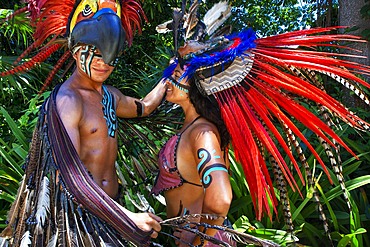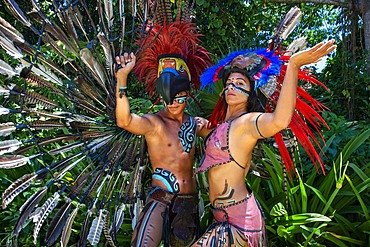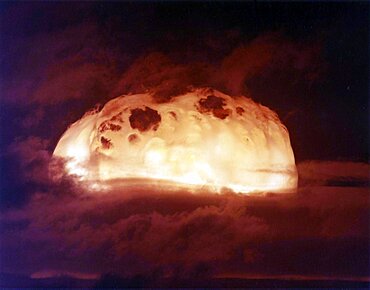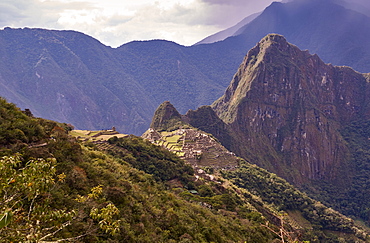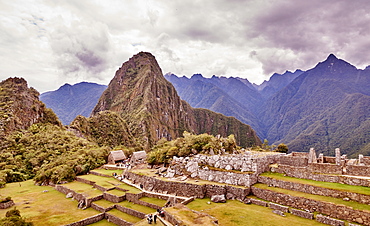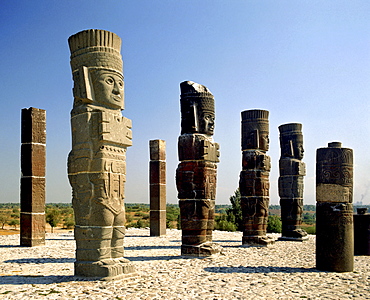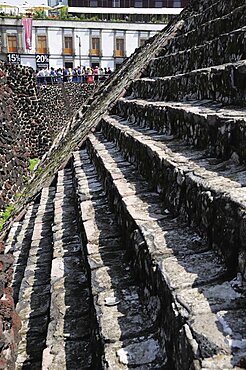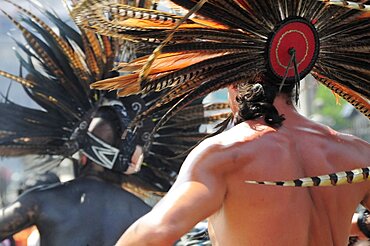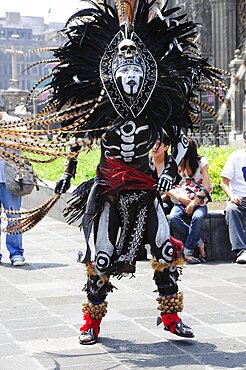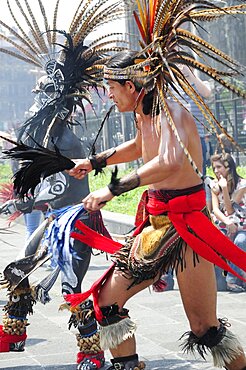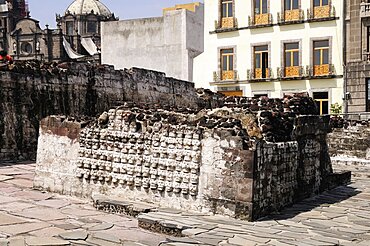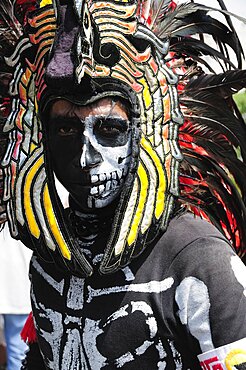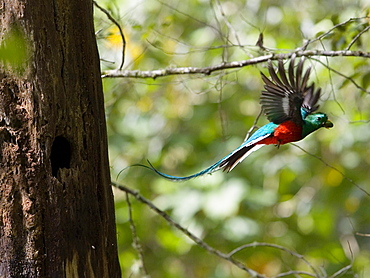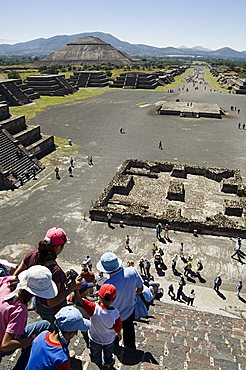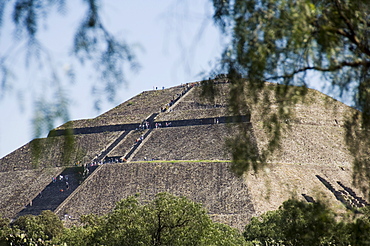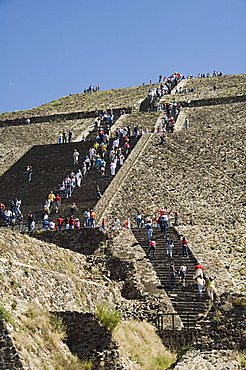Recent searches
Loading...
1384-287 - Templo Mayor archaeological Aztec city of Tenochtitlan, view to the cathedral church, Mexico City, Mexico
1384-284 - Templo Mayor archaeological site of Aztec capital city of Tenochtitlan, Centro Historico, Mexico City, Mexico
1384-285 - Stone Aztec statues on temple steps, archaeological site and museum of Templo Mayor, Mexico City, Mexico
1384-283 - Templo Mayor archaeological Aztec city of Tenochtitlan, view to the cathedral church, Mexico City, Mexico
1384-282 - Templo Mayor archaeological site of Aztec capital city of Tenochtitlan, Centro Historico, Mexico City, Mexico view to Casa del Marqués de Prado Alegre
1384-281 - Templo Mayor archaeological site of Aztec capital city of Tenochtitlan, Centro Historico, Mexico City, Mexico
1350-6608 - Mexican aztec dress gods at Grand Palladium White Sand Resort and Spa in Riviera Maya, Yucatan Peninsula, Quintana Roo, Caribbean Coast, Mexico.
Aztec clothing was generally loose fitting and did not completely cover the body. When the Spanish arrived in Mexico, the people were surprised to see them in their full armour, with only their faces exposed.
Aztec clothes were generally made of cotton (which was imported) or ayate fiber, made from the Maguey Cactus (also called the Century Plant or American Aloe). Women would weave the fibers into clothing, a task girls were taught as young teenagers. Because of their vast trading network, the Aztecs were able to make use of a beautiful array of dyes, creating the brilliant
1350-6595 - Mexican aztec dress gods at Grand Palladium White Sand Resort and Spa in Riviera Maya, Yucatan Peninsula, Quintana Roo, Caribbean Coast, Mexico.
Aztec clothing was generally loose fitting and did not completely cover the body. When the Spanish arrived in Mexico, the people were surprised to see them in their full armour, with only their faces exposed.
Aztec clothes were generally made of cotton (which was imported) or ayate fiber, made from the Maguey Cactus (also called the Century Plant or American Aloe). Women would weave the fibers into clothing, a task girls were taught as young teenagers. Because of their vast trading network, the Aztecs were able to make use of a beautiful array of dyes, creating the brilliant
1242-513 - The Cathedral, built from 1573 to 1813, stands atop the religious center of the conquered city of the Aztecs (Mexica), Mexico City, Mexico, North America
1242-509 - People line up to receive traditional ceremonies from indigenous priests in modern versions of Aztec ceremonial dress, Mexico City, Mexico, North America
1242-511 - In the old town, many line up to receive ceremonies from indigenous priests in modern versions of Aztec ceremonial dress, Mexico City, Mexico, North America
1350-5059 - Monte Alban Archaeological Site, Monte Alban, near Oaxaca, Oaxaca State, Mexico
1350-2072 - Aztec Cihuateotl. Mexico, Aztec. Late 15th-early 16th century. Stone. Metropolitan Museum of Art in New York City. 82nd Street Manhattan New USA
1174-10102 - Tightly packed Amaranth Aztec microgreen seedlings shot from above
1174-10088 - Close up of tightly packed Amaranth Aztec microgreen seedlings growing
1174-10101 - Tightly packed Amaranth Aztec microgreen seedlings shot from above
1184-5455 - Colourful boats on the Aztec canal system, UNESCO World Heritage Site, Xochimilco, Mexico City, Mexico, North America
1184-5452 - Colourful boats on the Aztec canal system, UNESCO World Heritage Site, Xochimilco, Mexico City, Mexico, North America
1184-5454 - Colourful boats on the Aztec canal system, UNESCO World Heritage Site, Xochimilco, Mexico City, Mexico, North America
1184-5453 - Colourful boats on the Aztec canal system, UNESCO World Heritage Site, Xochimilco, Mexico City, Mexico, North America
846-389 - Door arch inspired by Aztec designs of the parish church of Our Lady of Regla, Pajara, Fuerteventura, Canary Islands, Spain, Europe
1178-29983 - Peru, Machu Pichu, Machu Picchu and ruins of aztec village
1178-29981 - Peru, Machu Pichu, Mountain range and ruins of aztec village
1178-29980 - Peru, Machu Pichu, Mountain range and ruins of aztec village
832-383339 - Pyramid of the Moon, Pyramids of Teotihuacan, UNESCO World Heritage Site, Teotihuacan, State of Mexico, Mexico, Central America
801-2224 - Aztec statues, Phase 3, between 1427 and 1440, Pyramid Stairway, Templo Mayor, Mexico City, Mexico, North America
801-1814 - The Great Kiva, Aztec Ruins National Monument, UNESCO World Heritage Site, New Mexico, United States of America, North America
801-1815 - Open Kiva in West Ruins, Aztec Ruins National Monument, dating from between 850 AD and 1100 AD, UNESCO World Heritage Site, New Mexico, United States of America, North America
801-1816 - West Ruin, Aztec Ruins National Monument, dating from between 850 AD and 1100 AD, UNESCO World Heritage Site, New Mexico, United States of America, North America
801-1284 - Aztec calendar stone, National Museum of Anthropology, Mexico City, Mexico, North America
801-1285 - Tourists looking at Aztec calendar stone, National Museum of Anthropology, Mexico City, Mexico, North America
832-310507 - Stone figures, Toltec warriors in Tula, Aztec archaeological site, Tula, Mexico, Central America
1161-8139 - Mexican Aztec Indian in traditional costume, USA
1161-8140 - Musicians in Mexican Aztec Indian traditional costumes in Los Angeles, California, USA
1161-3077 - Man in Mexican Aztec Indian outfit plays recorder, United States of America
832-62377 - Replica of the mural of The Pulque Drinkers, a traditional drink of the Aztecs, the museum of the pre-Hispanic Pyramid of Cholula, San Pedro Cholula, Puebla, Mexico, Latin America, North America
832-58046 - Fire Wave rock formation, wave of banded and eroded Aztec sandstone rocks, Sleeping Lizard rock formation in the back, Valley of Fire State Park, Nevada, United States of America, USA
1113-32899 - Resplendent Quetzal male, Pharomachrus mocinno costaricensis, Costa Rica
797-10547 - Mexico, Federal District, Mexico City, Part view of steps of main pyramid in Templo Mayor Aztec temple ruins.
797-10538 - Mexico, Federal District, Mexico City, Michicoa Aztec dancers performing in the Zocalo.
1113-32964 - Resplendent Quetzal male in flight, Pharomachrus mocinno costaricensis, Costa Rica
797-10541 - Mexico, Federal District, Mexico City, Michicoa Aztec dancer dressed in costume of Senor de Muerte or Mr Death for performance in the Zocalo.
797-10544 - Mexico, Federal District, Mexico City, Replica tzompantli or wall of skulls in Templo Mayor Aztec temple ruins.
797-10543 - Mexico, Federal District, Mexico City, Michacoa Aztec dancers performing in the Zocalo.
797-10545 - Mexico, Federal District, Mexico City, Wall of Skulls or tzompantli in the Templo Mayor Aztec temple ruins.
797-10540 - Mexico, Federal District, Mexico City, Portrait of Michacoa Aztec dancer in feather head-dress and painted face as Senor de Muerte or Mr Death performing in the Zocalo.
797-10542 - Mexico, Federal District, Mexico City, Michacoa Aztec dancer wearing brightly coloured feather head-dress performing in the Zocalo.
797-10548 - Mexico, Federal District, Mexico City, Stone sculptures and part view of pyramid steps in Templo Mayor Aztec temple ruins.
1113-32965 - Resplendent Quetzal male in flight, Pharomachrus mocinno costaricensis, Costa Rica
1113-12570 - Entrance Hall with the aztec stone of the sun, National Anthropology Museum, Museo Nacional de Antropologia, Mexico City, Mexico D.F., Mexico
817-310708 - Aztec personage. Museo Nacional de Antropologia. Mexico City. Mexico
817-310704 - Cacaxtla frescoes. Museo Nacional de Antropologia. Mexico City. Mexico
817-310707 - Aztec personage. Museo Nacional de Antropologia. Mexico City. Mexico
817-306024 - Aztec sandstone formation, North shore, Lake mead national recreation area, USA, North America, Nevada, 2009, landscape, scenery, rocks, rock, mountain, mountains, natural arch. Aztec sandstone formation, North shore, Lake mead national recreation area, USA, North America, Nevada, 2009, landscape, scenery, rocks, rock, mountain, mountains, natural arch
817-306023 - Aztec sandstone formation, North shore, Lake mead national recreation area, USA, North America, Nevada, 2009, landscape, scenery, rocks, rock, mountain, mountains, natural arch. Aztec sandstone formation, North shore, Lake mead national recreation area, USA, North America, Nevada, 2009, landscape, scenery, rocks, rock, mountain, mountains, natural arch
817-273210 - Prehispanic Stone Skulls at Templo Mayor Museum, Mexico City
807-883 - Aztec Hall, National Museum of Anthropology, Mexico City, Mexico, North America
807-882 - Aztec Hall, National Museum of Anthropology, Mexico City, Mexico, North America
733-4851 - Aztec history, Museo Nacional de Antropologia (Anthropology Museum), District Federal, Mexico City, Mexico, North America
834-693 - Aztec Turquoise Mosaic of Double Headed Serpent from Mexico 15th to 16th century, British Museum, Bloomsbury, London, England, United Kingdom, Europe
817-135024 - Aztec Smeared Face, Museo de Medicina, Ciudad de Mexico
817-135582 - Peregrinacion Azteca, Museo Nacional de Arte (munal), Ciudad de Mexico
817-224166 - Colourful table cloth for sale in market, Teotihuacan Archaeological Site, Teotihuacan, Mexico City, Mexico
817-223508 - Papantla Flyers, Valparaiso Cultural Carnivals, Chile (december 27, 2008)
817-223509 - Papantla Flyers, Valparaiso Cultural Carnivals, Chile (december 27, 2008)
817-135423 - Conchero Aztec dancer, Ciudad de Mexico
817-126012 - Aztec dancer at the Zocalo, Mexico City, Mexico
817-20320 - Pyramids in the old city of Tajin, Veracruz, Mexico
817-2370 - Niches Pyramid at the old city of El Tajin, Veracruz state, Mexico
807-487 - Ruins, Templo Mayor, Aztec temple unearthed in the 1970s, Mexico City, Mexico, North America
807-425 - Aztec folk healer, shaman practising spiritual cleansing, Zocalo, Plaza de la Constitucion, Mexico City, Mexico, North America
807-415 - Aztec dancers, Zocalo, Plaza de la Constitucion, Mexico City, Mexico, North America
807-414 - Aztec dancers, Zocalo, Plaza de la Constitucion, Mexico City, Mexico, North America
796-431 - Aztec Ruins National Monument, New Mexico, United States of America, North America
641-7048 - Murals at Teotihuacan, site dating from 150AD to 600AD and later used by the Aztecs, UNESCO World Heritage Site, north of Mexico City, Mexico, North America
641-7047 - Pyramid of the Sun, Teotihuacan, 150AD to 600AD and later used by the Aztecs, UNESCO World Heritage Site, north of Mexico City, Mexico, North America
641-7046 - Pyramid of the Sun, Teotihuacan, 150AD to 600AD and later used by the Aztecs, UNESCO World Heritage Site, north of Mexico City, Mexico, North America
641-7045 - Pyramid of the Sun, Teotihuacan, 150AD to 600AD and later used by the Aztecs, UNESCO World Heritage Site, north of Mexico City, Mexico, North America
641-7044 - Pyramid of the Sun, Teotihuacan, 150AD to 600AD and later used by the Aztecs, UNESCO World Heritage Site, north of Mexico City, Mexico, North America
641-7043 - Tourists decending from the Pyramid of the Moon, Teotihuacan, 150AD to 600AD and later used by the Aztecs, UNESCO World Heritage Site, north of Mexico City, Mexico, North America
641-7042 - View from Pyramid of the Moon of the Avenue of the Dead and the Pyramid of the Sun in background, Teotihuacan, 150AD to 600AD and later used by the Aztecs, UNESCO World Heritage Site, north of Mexico City, Mexico, North America
641-7041 - View from Pyramid of the Moon of the Avenue of the Dead and the Pyramid of the Sun in background, Teotihuacan, 150AD to 600AD and later used by the Aztecs, UNESCO World Heritage Site, north of Mexico City, Mexico, North America
641-7040 - Pyramid of the Moon, Teotihuacan, 150AD to 600AD and later used by the Aztecs, UNESCO World Heritage Site, north of Mexico City, Mexico, North America
641-7039 - Columns depicting the Quetzal Bird, Palace of the Quetzal Butterfly, Teotihuacan, 150AD to 600AD and later used by the Aztecs, UNESCO World Heritage Site, north of Mexico City, Mexico, North America
641-7038 - Columns depicting the quetzal bird, Palace of the Quetzal Butterfly, Teotihuacan, 150AD to 600AD and later used by the Aztecs, UNESCO World Heritage Site, north of Mexico City, Mexico, North America
641-7037 - Pyramid of the Sun, Teotihuacan, 150AD to 600AD and later used by the Aztecs, UNESCO World Heritage Site, north of Mexico City, Mexico, North America
641-7036 - Gargoyles on the Temple of Quetzalcoati, Teotihuacan, UNESCO World Heritage Site, north of Mexico City, Mexico, North America
641-7034 - Pyramid of the Sun, Teotihuacan, 150AD to 600AD and later used by the Aztecs, UNESCO World Heritage Site, north of Mexico City, Mexico, North America
641-7033 - The Citadel, Teotihuacan, UNESCO World Heritage Site, north of Mexico City, Mexico, North America
641-7032 - Pyramid of the Sun, Teotihuacan, 150AD to 600AD and later used by the Aztecs, UNESCO World Heritage Site, north of Mexico City, Mexico, North America
641-7139 - Murals, Teotihuacan, 150AD to 600AD and later used by the Aztecs, UNESCO World Heritage Site, north of Mexico City, Mexico, North America
641-7138 - Murals, Teotihuacan, 150AD to 600AD and later used by the Aztecs, UNESCO World Heritage Site, north of Mexico City, Mexico, North America
641-7137 - Murals, Teotihuacan, 150AD to 600AD and later used by the Aztecs, UNESCO World Heritage Site, north of Mexico City, Mexico, North America
641-7136 - Murals, Teotihuacan, 150AD to 600AD and later used by the Aztecs, UNESCO World Heritage Site, north of Mexico City, Mexico, North America
641-7135 - Pyramid of the Sun, Teotihuacan, 150AD to 600AD and later used by the Aztecs, UNESCO World Heritage Site, north of Mexico City, Mexico, North America
641-7134 - Pyramid of the Sun, Teotihuacan, 150AD to 600AD and later used by the Aztecs, UNESCO World Heritage Site, north of Mexico City, Mexico, North America
641-7133 - Pyramid of the Sun, Teotihuacan, 150AD to 600AD and later used by the Aztecs, UNESCO World Heritage Site, north of Mexico City, Mexico, North America
641-7132 - Pyramid of the Sun, Teotihuacan, 150AD to 600AD and later used by the Aztecs, UNESCO World Heritage Site, north of Mexico City, Mexico, North America
641-7131 - Pyramid of the Sun, Teotihuacan, 150AD to 600AD and later used by the Aztecs, UNESCO World Heritage Site, north of Mexico City, Mexico, North America






